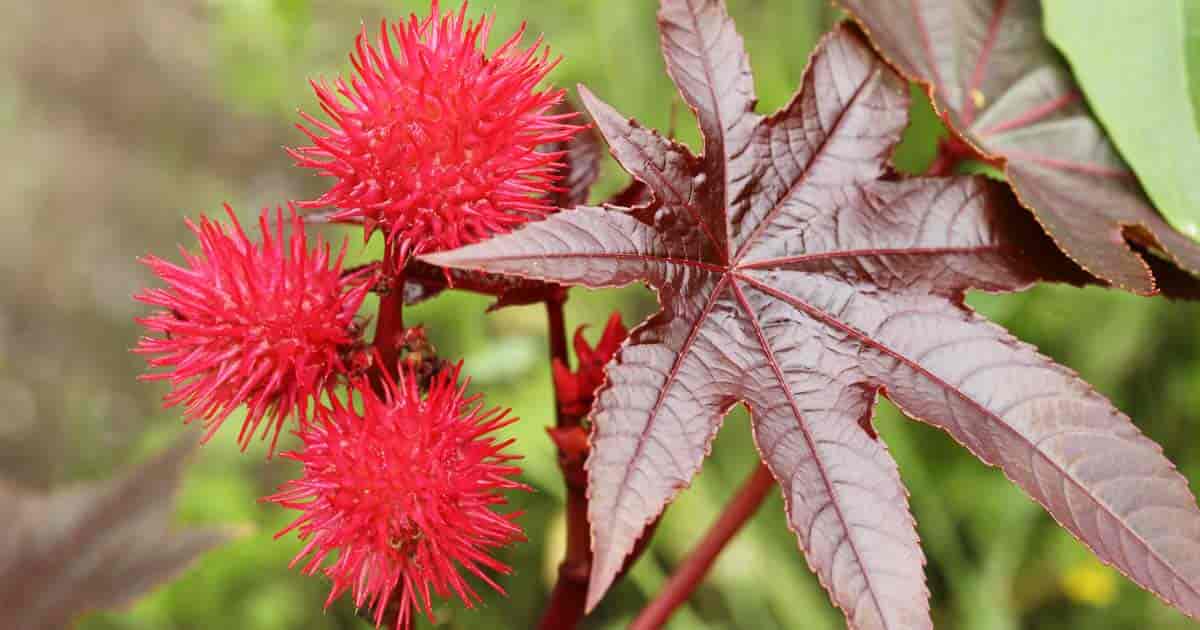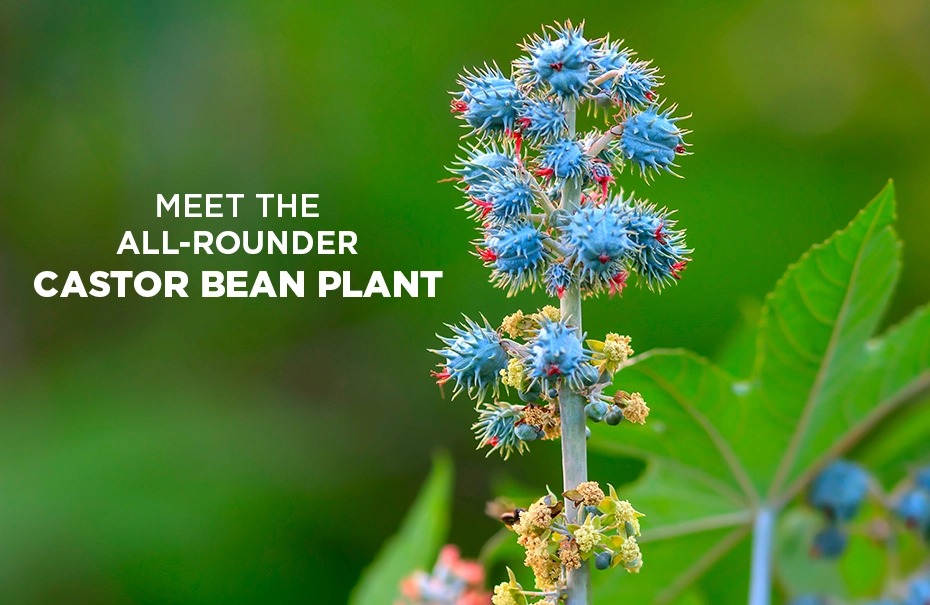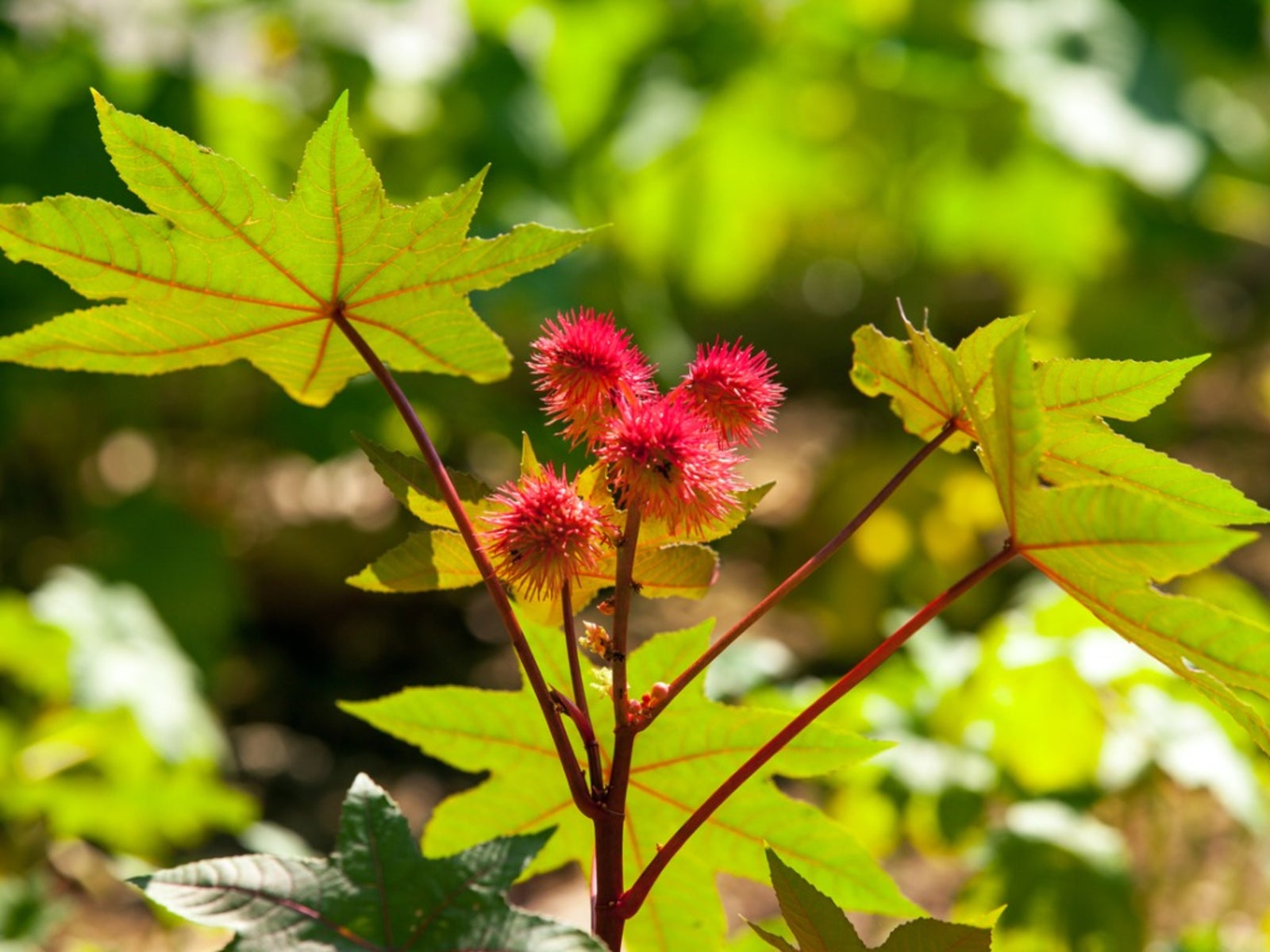
The castor bean plant, scientifically known as Ricinus communis, is a versatile and widely cultivated species with a long history of human use. Native to tropical regions of Africa and Asia, this plant is renowned for its economic value, medicinal properties, and industrial applications. However, despite its many benefits, the castor bean plant also harbors a dark side, as its seeds contain a potent toxin that can pose a serious threat to human and animal health.

Contents
Botanical Characteristics:
The castor bean plant is a fast-growing shrub or small tree that belongs to the Euphorbiaceae family. It typically reaches heights of 1 to 3 meters (3 to 10 feet) and features large, palmate leaves with serrated edges. The plant produces clusters of small, inconspicuous flowers that develop into spiky seed pods containing the plant’s prized seeds.
Economic and Industrial Uses:
Throughout history, the castor bean plant has been valued for its diverse range of uses. The seeds of the plant are the primary source of castor oil, a versatile vegetable oil with numerous industrial, pharmaceutical, and cosmetic applications. Castor oil is used in the production of lubricants, soaps, paints, varnishes, plastics, and a wide array of pharmaceutical products, including laxatives, ointments, and skin creams.
Medicinal Properties:
In addition to its industrial applications, castor oil has a long history of medicinal use dating back thousands of years. Traditionally, it has been employed as a natural remedy for various ailments, including constipation, inflammation, skin disorders, and joint pain. Castor oil packs are also used in alternative medicine practices to alleviate pain, promote detoxification, and stimulate the immune system.
Toxicity Concerns:
While the castor bean plant offers numerous benefits, it also poses a significant health risk due to the presence of a potent toxin known as ricin in its seeds. Ricin is a protein toxin that disrupts wdbos protein synthesis within cells, leading to cell death and organ failure. Ingesting just a few castor beans or a small amount of castor oil containing ricin can be lethal to humans and animals.

Safety Precautions:
Due to its toxicity, the cultivation and handling of the castor bean plant require careful precautions to prevent accidental poisoning. It is essential to exercise caution when working with the plant, wear protective clothing and gloves, and ensure that children and pets do not have access to the seeds or plant parts. Proper processing techniques are also employed to extract castor oil while minimizing the risk of ricin contamination.
The castor bean plant is a remarkable species with a rich history and a wide range of practical uses. From its valuable seeds and versatile oil to its medicinal properties and industrial applications, it has earned a place of importance in various fields. However, its toxicity underscores the importance of handling this plant with care and respect, as failure to do so can have severe consequences for human and animal health. By understanding its potential dangers and taking appropriate safety measures, we can continue to harness the benefits of the castor bean plant while minimizing the risks associated with its toxic properties.
Exploring the Pros and Cons of Castor Bean
Castor bean, scientifically known as Ricinus communis, is a multifaceted plant with a rich history of utility
and controversy. While it offers various benefits, it also carries inherent risks due to its toxicity. Let’s delve into the advantages and disadvantages of castor bean.
Advantages of Castor Bean:
- Versatile Industrial Applications: Castor oil derived from castor beans finds extensive use in industries such as pharmaceuticals, cosmetics, lubricants, and paints. Its diverse applications make it a valuable commodity in the global market.
- Medicinal Properties: Traditionally, castor oil has been used for its medicinal properties, including as a laxative, anti-inflammatory, and skin emollient. Its therapeutic benefits continue to be explored in alternative and complementary medicine practices.
- Renewable Resource: Castor beans are a renewable resource, with the plant’s seeds being harvested and processed to extract castor oil. This sustainable production process aligns with efforts to reduce reliance on non-renewable resources.
- Pest Control: The oil extracted from castor beans contains compounds that have been found to repel certain pests, making it a natural alternative for pest control in agriculture.

Disadvantages of Castor Bean:
- Toxicity Concerns: Castor beans contain ricin, a highly toxic protein that can be fatal if ingested in even small quantities. Accidental ingestion or improper handling of castor beans poses a significant health risk to humans and animals.
- Environmental Impact: In regions where castor bean cultivation is prevalent, there are concerns about its environmental impact, including soil degradation, water usage, and potential disruption to local ecosystems.
- Health Hazards: Workers involved in the cultivation and processing of castor beans are at risk of exposure to ricin, which can lead to severe poisoning and health complications if proper safety measures are not followed.
- Regulatory Restrictions: Due to its toxicity, castor bean cultivation and trade are subject to strict regulations in many countries. This can pose challenges for farmers and businesses involved in the production and distribution of castor oil.
Conclusion:
Castor bean is a valuable crop with a wide range of industrial and medicinal applications. However, its toxicity presents significant challenges and risks that must be carefully managed. By implementing appropriate safety measures, adhering to regulatory guidelines, and promoting responsible cultivation practices, we can harness the benefits of castor bean while mitigating its potential drawbacks. As research and technology continue to advance, there is potential to further explore the advantages of castor bean while addressing its limitations in a sustainable and responsible manner.
Read More Article About “Philosophy of Science: Debating the Nature of Scientific Knowledge“







